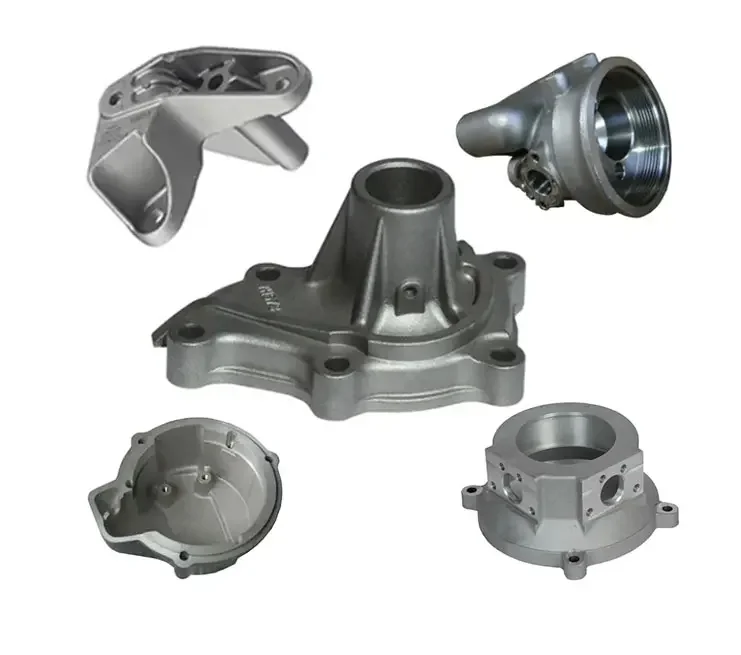- This topic is empty.
-
AuthorPosts
-
2025-09-17 at 9:19 am #10424
Precision investment casting parts play a crucial role in modern manufacturing, offering high dimensional accuracy, excellent surface finish, and the ability to create complex geometries. Known as the “lost wax casting” process, investment casting enables manufacturers to produce parts that would be difficult or impossible to achieve using conventional machining. In this blog post, as a professional high quality CNC machining parts manufacturer, Vibo will share the advantages of precision investment casting parts in manufacturing.
Investment Casting Process Explained
The foundation of precision investment casting parts lies in the meticulous process of mold creation. A wax model of the part is first designed, coated with ceramic slurry, and hardened to form a durable shell. Once the wax is melted away, molten metal is poured into the cavity. The result is a part with outstanding accuracy, replicating even the most intricate details of the original design. This process makes investment casting ideal for producing components that require tight tolerances and smooth finishes.
Advantages of Precision Investment Casting Parts in Manufacturing
Unlike sand casting or die casting, precision investment casting parts offer:
-
Superior Surface Quality: Reduced need for machining and polishing.
-
Dimensional Accuracy: Tight tolerances meet the requirements of high-performance industries.
-
Design Flexibility: Enables production of intricate shapes, thin walls, and internal passages.
-
Material Versatility: Compatible with stainless steel, superalloys, aluminum, titanium, and more.
Types of Precision Investment Casting Parts
The versatility of investment casting allows manufacturers to create a wide range of precision parts. Some key categories include:
Aerospace Precision Investment Casting Parts
In aerospace, safety and performance are non-negotiable. Precision investment casting parts are used for turbine blades, structural brackets, and engine housings. The ability to withstand extreme temperatures and mechanical stress makes investment casting the preferred choice.
Automotive Investment Casting Components
From transmission components to turbocharger housings, automotive industries rely on investment casting to create lightweight yet strong parts. Precision investment casting parts contribute to fuel efficiency, reduced emissions, and improved engine performance.
Medical-Grade Investment Casting Parts
The medical sector demands biocompatible and precisely engineered parts for implants, surgical tools, and diagnostic devices. Precision investment casting parts meet these stringent requirements by delivering exact geometries and safe material options.
Industrial and Energy Sector Components
Valves, pumps, and turbine components are examples of industrial uses for precision investment casting parts. In the energy sector, these parts are critical for oil and gas, as well as renewable energy systems.

Why Choose Precision Investment Casting Parts Over Other Methods?
When comparing investment casting with machining, forging, or sand casting, precision investment casting parts often emerge as the superior option. For complex geometries and intricate designs, machining may be cost-prohibitive or technically unfeasible. Similarly, forging lacks the flexibility for hollow or thin-walled components. Investment casting offers the ideal balance between complexity, performance, and cost efficiency.
Role of Materials in Precision Investment Casting Parts
Material selection greatly influences the performance of precision investment casting parts. Stainless steel ensures corrosion resistance, making it ideal for medical and food-processing applications. Superalloys like Inconel deliver exceptional heat resistance for aerospace and energy systems. Titanium alloys are prized in aerospace and medical fields for their high strength-to-weight ratio. By choosing the right material, manufacturers optimize the performance and durability of investment cast components.
Innovations in Precision Investment Casting Technology
Modern advancements are elevating the quality and efficiency of precision investment casting parts:
-
3D Printing of Wax Patterns: Speeds up prototyping and enables rapid design iterations.
-
Automation in Shell Building: Enhances consistency and reduces human error.
-
Simulation Software: Predicts metal flow and solidification to minimize defects.
-
Sustainable Practices: Improved energy efficiency and recycling reduce environmental impact.
Applications of Precision Investment Casting Parts in Emerging Industries
While aerospace and automotive are traditional markets, new industries are adopting precision investment casting parts:
-
Robotics: Custom joints and lightweight structural parts improve flexibility.
-
Renewable Energy: Wind turbine components and solar energy systems require high-performance cast parts.
-
Defense and Military: Weapon system components and structural supports demand reliability and precision.
Conclusion
Precision investment casting parts represent the intersection of tradition and innovation. Rooted in the centuries-old lost wax process, yet enhanced by modern materials science and digital tools, these components are indispensable across industries. Whether in aerospace turbines, medical implants, or automotive engines, precision investment casting parts deliver reliability, accuracy, and performance that alternative methods cannot match. As technology evolves, their role will only become more vital in shaping the future of manufacturing.
-
-
AuthorPosts
- You must be logged in to reply to this topic.
